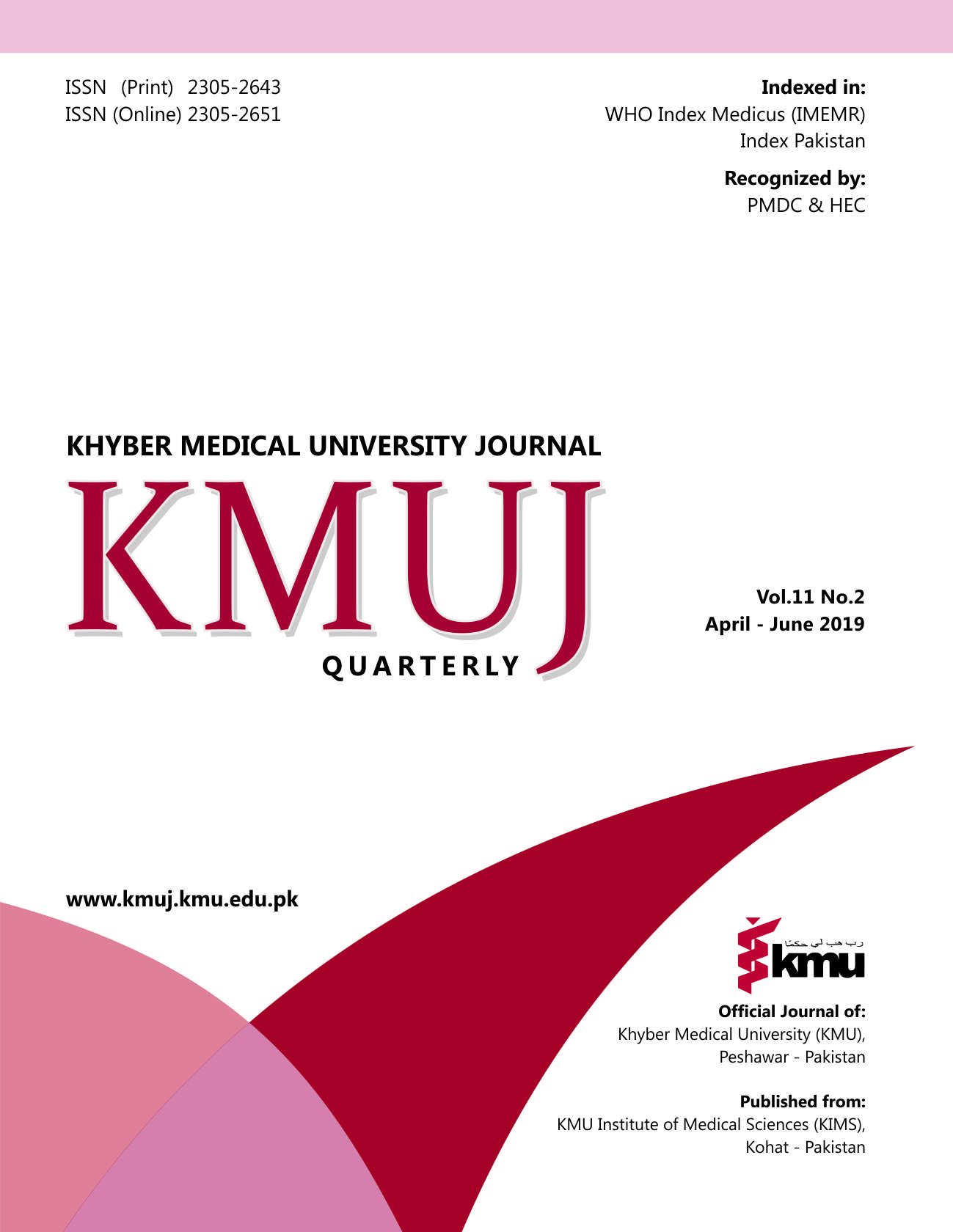VACCINE HESITANCY: A THREAT TO VACCINE PREVENTABLE DISEASE PROGRAMS
Main Article Content
Abstract
Childhood vaccination program provides one of the most cost-effective public health interventions. Vaccination prevents about 2-3 million deaths a year.1 Disease elimination and eradication programs are one of the most effective way to interrupt disease transmission, which results in reducing morbidity and mortality. After successful eradication of small pox in 19772, the world is close to achieve the goal of polio eradication. Polio eradication program has evolved since its beginning around three decades ago. However, the program has seen several challenges during this time around the globe. Hesitation to vaccinate remains one of the most important factors to determine the course of eradication program. Vaccine hesitancy is “the reluctance or refusal to vaccinate despite the availability of vaccines”.1 Any factor affecting the public trust in vaccine safety, purity or efficacy can result in variable level of vaccine hesitancy.3-5 Vaccine hesitancy, if not addressed timely and effectively, can hamper the progress of the program and pose challenges to completion of the disease eradication and elimination programs. Vaccine hesitancy affects the coverage and has impact on overall immunity levels and it needs to be taken seriously. Among all public health interventions, immunization programs were able to investigate the details of the reasons for not vaccinating children. Probably, to our knowledge, the polio program has underwent the most in-depth exploration on the causes of reluctance to vaccinate than any other public health program. However, vaccine hesitancy is comparatively difficult to capture in routine immunization program. Vaccine hesitancy becomes more obvious during supplementary immunization campaigns as the interventions are for brief time and the time taken by community to react to intervention is short as well. While the goal of eradicating polio is near, the issues of vaccine hesitancy are still adversely affecting the global eradication of polio.
Article Details
Work published in KMUJ is licensed under a
Creative Commons Attribution 4.0 License
Authors are permitted and encouraged to post their work online (e.g., in institutional repositories or on their website) prior to and during the submission process, as it can lead to productive exchanges, as well as earlier and greater citation of published work.
(e.g., in institutional repositories or on their website) prior to and during the submission process, as it can lead to productive exchanges, as well as earlier and greater citation of published work.
References
World Health Organization. Ten threats to global health in 2019. [Cited on June 20, 2019]. Available from URL: https://www.who.int/emergencies/ten-threats-to-global-health-in-2019
Stuart-Harris C. Prospects for the eradication of infectious diseases. Rev Infect Dis 1984 May-Jun;6(3):405-11.
Shawn D, Gold R. Survey of parents’ attitudes to the recommended Haemophilus influenzae type b vaccine program. CMAJ 1987;136: 1038–40. Available: http://www.ncbi.nlm.nih.gov/entrez/query.fcgi?cmd=Retrieve&db=
Salmon DA, Moulton LH, Omer SB, DeHart MP, Stokley S, Halsey NA. Factors associated with refusal of childhood vaccines among parents of school-aged children: A case-control study. Arch Pediatr Adolesc Med 2005;159: 470–6. DOI: 10.1001/archpedi.159.5.470
Baumgaertner B, Carlisle JE, Justwan F. The influence of political ideology and trust on willingness to vaccinate. PLoS One 2018;13(1):e0191728. Published 2018 Jan 25. DOI:10.1371/journal.pone.0191728
Salmon DA, Dudley MZ, Glanz JM, Omer SB. Vaccine hesitancy: Causes, consequences, and a call to action. Vaccine 2015 Nov 27;33 Suppl 4:D66-71. DOI: 10.1016/j.vaccine.2015.09.035
Eskola J, Duclos P, Schuster M, MacDonald NE; SAGE Working Group on Vaccine Hesitancy. How to deal with vaccine hesitancy? Vaccine 2015 Aug 14;33(34):4215-7. DOI: 10.1016/j.vaccine.2015.04.043. Epub 2015 Apr 18.
Independent monitoring board of the global polio eradication initiative. Every last hiding place. Fifteenth report: December 2017. [Cited on June 20, 2019]. Available from URL: http://polioeradication.org/wp-content/uploads/2017/12/polio-eradication-15th-IMB-Report-2017-11.pdf
Bezhan F, Shah M. Anti-program propaganda in Khyber Pakhtunkhwa province of Pakistan. Radio Free Europe/Radio liberty. April 27, 2019. [Cited on June 20, 2019]. Available from URL: https://www.rferl.org/a/mass-panic-propaganda-and-mobs-how-an-anti-polio-drive-came-to-a-screeching-halt-in-pakistan/29907091.html
Leask J, Kinnersley P, Jackson C, Cheater F, Bedford H, Rowles G. Communicating with parents about vaccination: a framework for health professionals. BMC Pediatr 2012 Sep 21;12:154. DOI: 10.1186/1471-2431-12-154.
Murakami H, Kobayashi M, Hachiya M, Khan ZS, Hassan SQ, Sakurada S. Refusal of oral polio vaccine in northwestern Pakistan: a qualitative and quantitative study. Vaccine 2014 Mar 10;32(12):1382-7. DOI: 10.1016/j.vaccine.2014.01.018. Epub 2014 Feb 1.
Khan TM, Sahibzada MU. Challenges to health workers and their opinions about parents' refusal of oral polio vaccination in the Khyber Pakhtoon Khawa (KPK) province, Pakistan. Vaccine 2016 Apr 19;34(18):2074-81. DOI: 10.1016/j.vaccine.2016.03.008. Epub 2016 Mar 15.
Khan T, Qazi J. Hurdles to the global antipolio campaign in Pakistan: an outline of the current status and future prospects to achieve a polio free world. J Epidemiol Community Health 2013;67:696-702. DOI: 10.1136/jech-2012-202162. Epub 2013 May 17.
